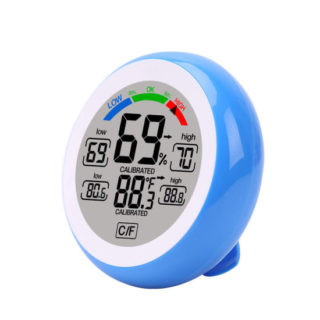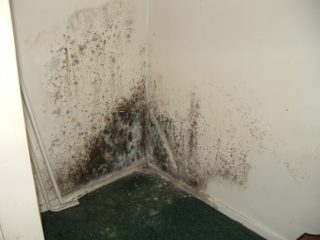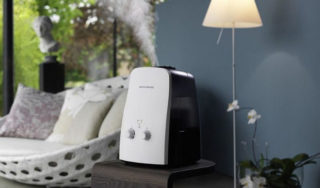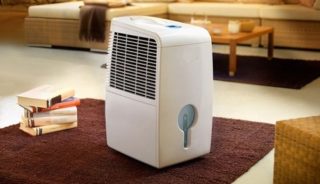Air humidity in the apartment is the norm set by GOSTs and SanPiN. Thanks to the optimal performance, the human body feels comfortable in the room, is capable of healthy life and the fulfillment of the assigned physical and intellectual tasks.
Humidity standards

Any air (indoors or outdoors) has a specific temperature and percentage of humidity. Both parameters have an impact on the human body.
If, with fluctuations in temperature, it is enough to dress / undress to feel relatively comfortable, then when the normal indicator of humidity changes to a critical one, the body experiences stress.
The human body is 80% water. Therefore, excessive humidity outside makes it difficult to breathe, which leads to poor blood supply to organs and systems.
The optimal indicator of humidity for residential premises is considered to be the range from 45% to 55%. Anything higher or lower is considered critical and requires outside intervention.
Sanitary standards for humidity for residential premises
Despite the fact that the optimal allowable moisture level in residential buildings, apartments and commercial premises is 45–55%, there are a number of documents that regulate these parameters. The following legislative papers interpret what the humidity should be in an apartment or house, classroom, office:
- SanPiN 2.1.2.1002-00. The optimum humidity level should be between 30 and 45%. The same is written in SNiP 2.04.05-91. At the same time, it is written here in the SanPiN that if the room is not equipped with a forced ventilation system, optimal humidity indicators are achieved by regularly ventilating the rooms.
- GOST 30494-2011. Indoor microclimate parameters. It is indicated here that the humidity in residential premises should not exceed 60%.
- SNiP 23-01-99. There are three levels of indoor humidity: dry air (less than 40%); norm (40-50%); high humidity (from 60%).
Physiologists and health professionals recommend keeping indoor humidity below 45% regardless of the season or heating season.
How humidity affects human well-being

Optimum moisture content in living rooms helps the human body to function fully and stay healthy. If this parameter falls below normal (dry air), the body undergoes the following changes:
- dry mucous membranes, skin, hair;
- the appearance of peeling and cracks in the epidermis;
- introduction of pathogenic bacteria into microscopic wounds;
- ingestion of microparticles of dust, fungal spores into the respiratory tract, which will never fix on a normal moist mucous membrane, and in this case they will go deeper;
- manifestation of allergic reactions;
- development of bronchial asthma;
- the formation of conjunctivitis;
- general dehydration of the body;
- violation of the transmission of nerve impulses from muscles to the brain, etc.
Young children and the elderly are especially affected by increased dryness in the room. Immunity is weakened, unable to withstand abnormal conditions of existence.

With high humidity, the following health risks arise:
- the growth and development of the fungus on the walls of the room;
- mold spores into the respiratory tract and mucous membranes;
- the development of allergic reactions;
- respiratory failure (breathing in a damp room is harder to do);
- inadequate saturation of organs and systems with oxygen.
For a healthy indoor microclimate, it is important to observe the temperature values and the recommended humidity parameters in winter and summer.
Pediatrician Komarovsky recommends maintaining the required humidity level in the children's room within 60%, especially if the baby is sick. Such an indicator contributes to a speedy recovery, since bacteria and microbes are not able to penetrate into the deep layers of the respiratory tract of a newborn and an older baby.
External signs of dry and waterlogged air

To quickly determine the level of humidity in your home, just look around. When the air is dry, wooden objects crack, indoor flowers look withered and withered, a large amount of dust collects on horizontal surfaces.
High humidity is foggy windows, fungus in the corners of the room on the wallpaper, mold deposits on the ground in pots with indoor flowers. In addition, there is a distinct smell of dampness in the room.
How to determine the moisture level
To determine the moisture parameter, you can use one of several popular methods:
- Banal - a glass of water. To do this, you need to collect water in a glass transparent glass and put it in the refrigerator for several hours. Then the glass is taken out and placed on the table in the kitchen. They are watching. If the outside walls of the glass are fogged up after 10-15 minutes, the humidity level in the room is normal. The walls are dry - the air is dry. Drops of water roll down the walls onto the table - the humidity is more than 60% (increased).
- Scientific - hygrometer. Such a device can be mechanical, condensation, electronic. Judging by practice, the electronic one is the most accurate in the readings. Place the hygrometer indoors and wait for the results.
- Mathematical - Asman table. You will need a room thermometer for her. First, it is worth measuring the air temperature in the room and entering the readings in the vertical column (make a mark on the scale). Then the thermometer is wrapped in a wet cloth and left for 5-10 minutes. Over time, it is removed and the difference between the readings of the "dry" thermometer and the "wet" one is calculated. The data is entered into a horizontal column of the table. The number that turned out to be at the intersection of these two indicators is the humidity level in the room.
- Folk - natural materials. For example, a spruce cone. It needs to be fixed to the plywood and left at the top of the room. If after a while the scales of the cones begin to open, the air in the room is dry. Shrink - very wet. Remain unchanged - indicators are normal.
You can watch indoor flowers. If the tips of their leaves dry and crumble, the air is too dry.
How to optimize the microclimate in the house
After it was possible to measure the humidity in the rooms, it is necessary to take steps to optimize the microclimate. You need to act depending on the situation.

To increase humidity, you can do the following:
- Install humidifiers in the rooms. With continuous operation of the device, it may take 5 to 7 days for the air in the apartment or house to fully return to normal.
- Carry out wet cleaning regularly.
- Dry washed laundry indoors (on ropes, doors, dryer or radiators).
- Install an aquarium with fish in the room with a capacity of at least 10 liters.
- Provide full ventilation of the rooms according to the draft principle. It is advisable to do this three times a day.
- Grow indoor plants in moderation to humidify the air.
You can also keep the bathroom door constantly open, often spray indoor plants, and install water containers near radiators.

With high humidity in the house, you need to do the following:
- It is imperative to check the performance of the ventilation system in the apartment. In the event of a malfunction, invite a specialist.
- Install a cooker hood over the stove. Especially if there is a lot of cooking in the house.
- Ventilate the room regularly.
- Provide normal heating at home. High-quality heating dries the air to normal.
- Turn on the air conditioner for heating.
- If there are leaks in the sewer and water pipes, urgently fix them.
- The best option for reducing humidity is the use of dehumidifiers. Which one to choose - compression or adsorption, is up to the owner of the apartment. Both do the job perfectly.
Another way to reduce humidity in a room is to allow sunlight to enter the room. During the day, it is advisable to keep the curtains as wide open as possible.
The normal level of moisture in the air is a guarantee of the health of adults and children.








